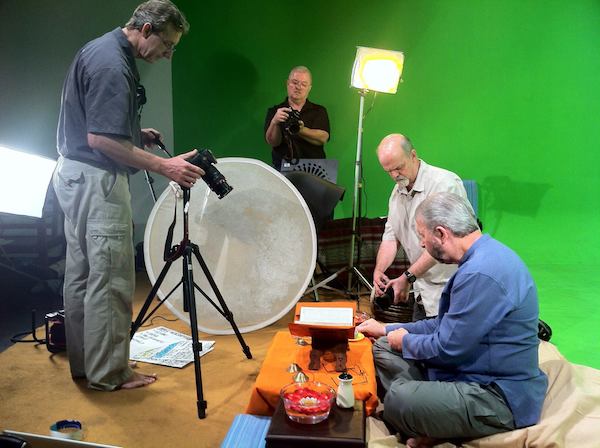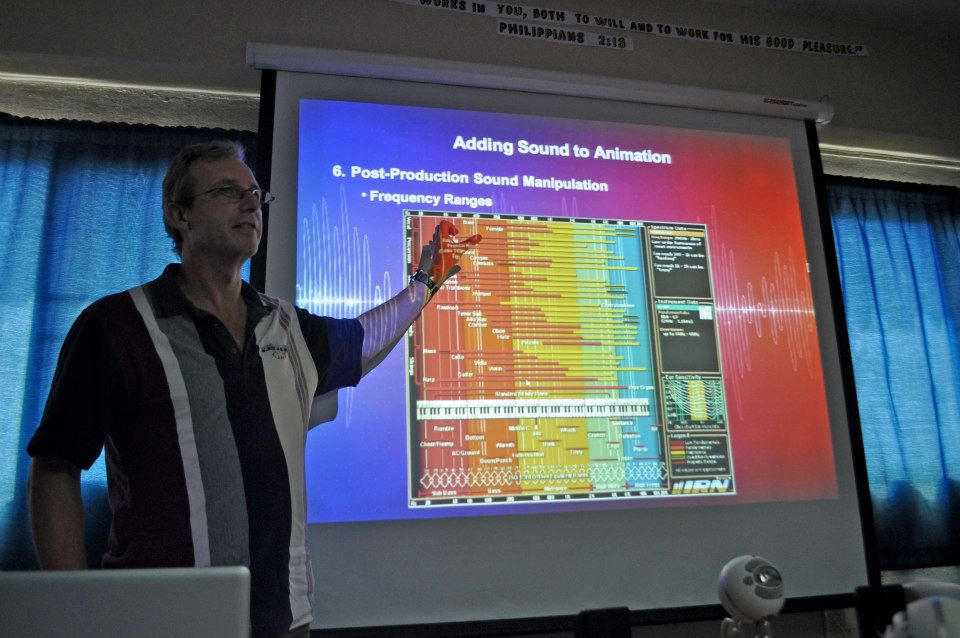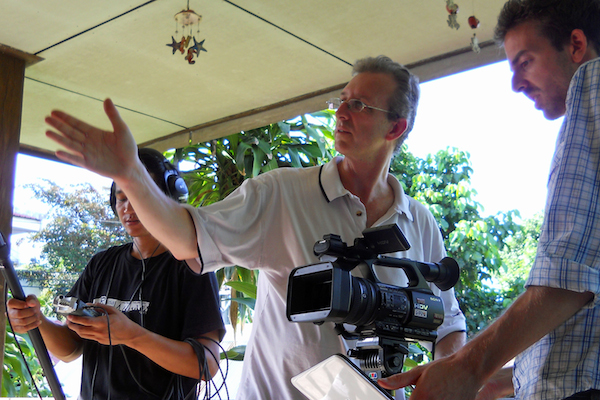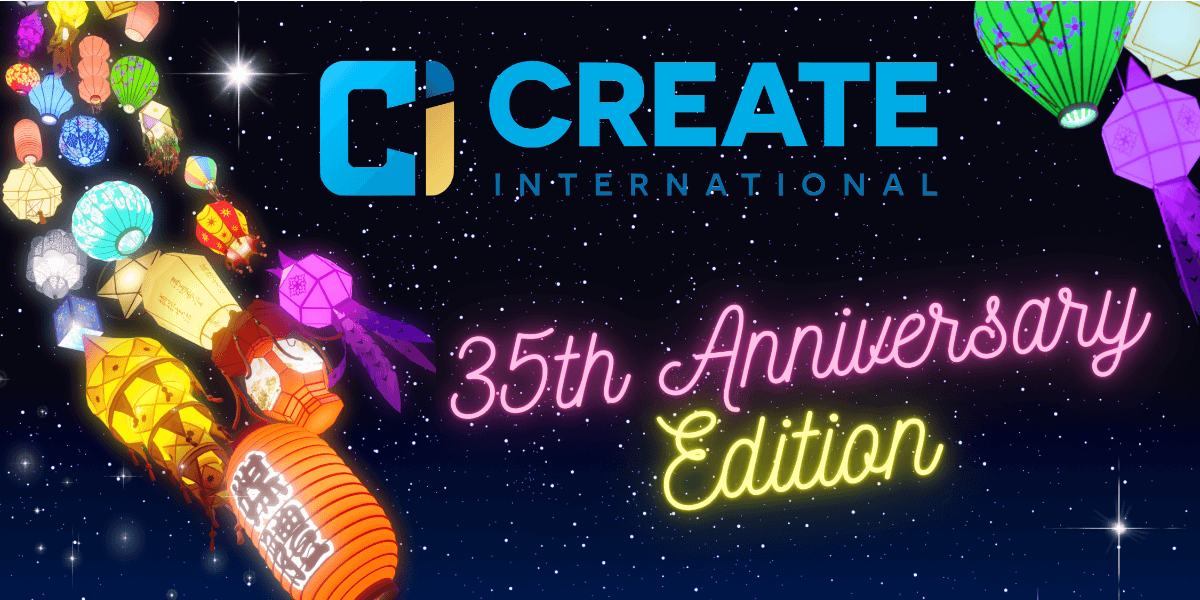What are you doing in Thailand?
As a ministry, we are involved in producing contextualized art and media resources that share the Gospel to the unreached mega peoples of the world. Another aspect of the ministry is in training the Body of Christ in using their artistic and media-related skills in missions. We have run Discipleship Training Schools; the School of Frontier Media; the School of Cartooning and Animation for Missions; and are currently running the Visual Arts for Missions School. My specific role is that of a videographer for our video productions. I have been in Thailand for over 4 years and have worked on Evangelistic Videos; Contextualized Gathering Videos; Mobilization Videos; Promotional Videos and Teaching/Training Videos.
How will this help the spread of the Good News?
The contextual resources are in the language and the culture of the people we are trying to reach. This helps to break down the misconception that ‘Christianity is a foreign religion’, and shows people that God loves their unique cultural identity, and they can worship Jesus in a way that is natural to them. Also, many of the unreached peoples are illiterate (or pre-literate), so audio-visuals are a great way to share the Good News with them in a way that they can understand. Our evangelistic resources are also free downloads on the internet, so they are able to spread quickly and into regions that are difficult to get to as a conventional missionary.http://www.indigitube.tv
Dealing with un-reached people groups, how do you find people who are competent to be involved in videos etc.?
We partner with field workers who already have built relationships in the region where they are serving. Often, the actors are believers who want to help reach out to their own people, but other times, God leads us to people who just want to act in a video. Potential actors are cast for the different roles, and their acting abilities range from project to project. There are occasions when we need to hire ‘professional’ actors, but most of the time God provides untrained actors who end up doing a good job. In addition, as a note of praise, we’ve had some non-believing actors give their lives to Christ through the exposure to the Gospel as they are acting out the drama.

What project are you working on at the moment?
The project that I just finished is called ‘Practical Tools and Insights for Reaching Buddhists/Hindus/Muslims.’ This is a 3-disk training package based on interviews from field workers that we’ve collected over the years, which shares effective methods and tools that have been used to present the Gospel.
I’ve seen a video of young adults on short term mission sharing video clips/ mp4 files with people of peace in the country they’re visiting. How are people responding to these things? How is it helping/not helping the planting of communities of faith?
When we hear back from the field, it is often positive, since the dramas are in their heart language, and ‘church’ is modeled in a culturally-relevant way. One Muslim woman in Indonesia who was resistant to the Gospel, watched the contextual gathering video and then responded, “If this is what being a Christian is all about, I could worship Jesus like this.” There was also an Indian pastor who watched our Hindi evangelistic video and then said, “If we demonstrate Christianity in this way, we won’t experience as much persecution.” A church-planter in Thailand is wanting to show the evangelistic video, “in every village in the North,” and use the contextual gathering video to disciple all new believers. Another example is from a trainer of church-planters who was struggling to explain what a home fellowship might look like among Hindu or Muslim-background believers, but when he played a contextual gathering video for them, they instantly ‘got it’ because it was modeled for them.
Does this evangelism style ‘lose’ anything? E.g. helping hone the skills of the evangelist to engage someone in ordered conversation/thinking/exploring? What happens with the person being engaged if they have questions etc? The part of the Holy Spirit in the process?
There is always the possibility that people could rely too much on the resource as the means of sharing the Gospel, in the same way that they could just hand someone a tract and assume that they’ve witnessed to the person. The goal is not to replace the evangelist, but to use the resources as tools that will open up the door to further conversations. Also, the tools are more effective if the evangelist has taken the time to build relationships with the people first, and then bring out an audio-visual to help explain the Gospel.
The hope is that the resource will arouse interest and generate questions that the evangelist can then follow up with. In the case where the video was downloaded, and there is no personal contact, we have a contextualized evangelistic website at the end of each video. The website might answer some of their questions, but there is also a ‘Contact Us’ in order to converse online.
As with other forms of evangelism, we cannot save or convert anyone – it is the role of the Holy Spirit. Evangelism should always be accompanied by prayer for the people that they would have open hearts and be drawn to the Gospel by the Holy Spirit. I just believe that if we can build bridges through a contextualized presentation of the Gospel, then people are more likely to respond to the promptings of the Holy Spirit in their lives.








